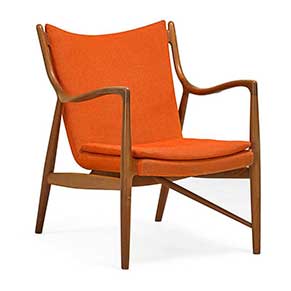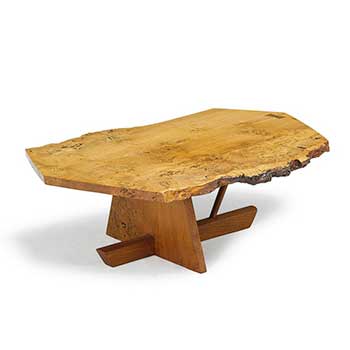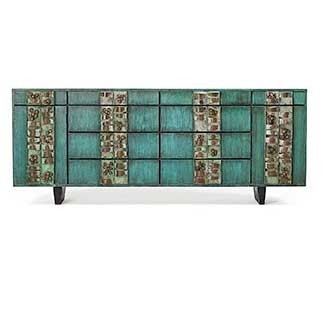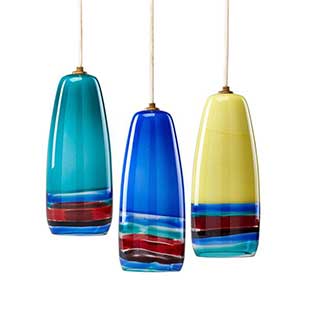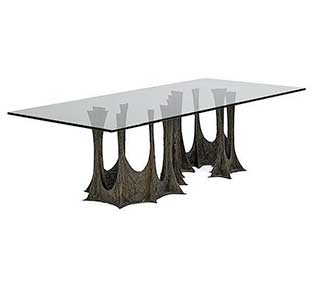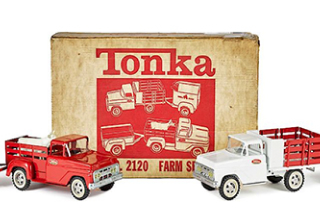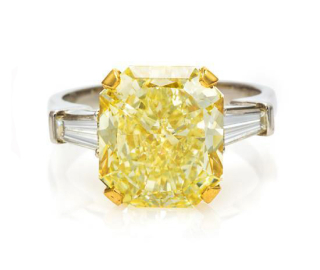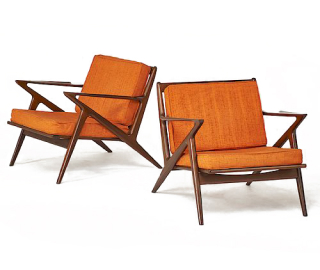Modern Furniture
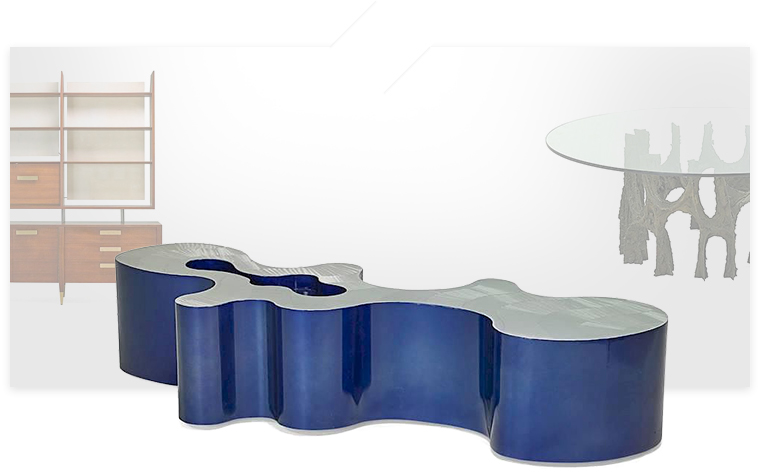
Buying Guide
Modern Furniture
A Beginners Guide:
Collecting Modern Furniture with Jad Attal
It goes with everything. After several decades and multiple comebacks, midcentury modern furniture has proven to be endlessly irresistible. With major retailers such as CB2, West Elm and IKEA continuing to churn out replicas of 1950s designs, the coined phrase from the 1980s, "midcentury modern" is now a popular buzzword being fired off by buyers in their twenties.
The vintage "modern" style seems to become even more modern as time goes on, both in appearance and theory. Original midcentury modern pieces and copies alike are appreciated for many of the same reasons designers such as Herman Miller, Florence Knoll, Charles and Ray Eames and Eero Saarinen made them in the first place. Their lightweight, geometric simplicity lends itself to small urban spaces, the materials are durable and affordable, and above all, the straightforward utility of modern design can unify an interior with intellectual flair.
Another advantage of vibing with vintage furniture is that much of it was mass-produced during the mid-20th century, so you don't have to settle for reproductions. The originals are out there - cataloged in auctions on platforms such as Bidsquare and touted in vintage shops all across America.
If you've been looking to turn your taste in a more modern direction, we suggest taking a bite of the basics from a man who knows how to get your style stirring - Jad Attal, a modern design expert and Specialist in 20th/21st Century Design at Rago, explains:
5 Tips to Collecting Modern Furniture
Wear and Tear, When to Care
Different markets are willing to accept different levels of wear and tear. Condition comes down to what collectors for a given item look for in that object. Everyone loves finding a piece in great original condition, but then there’s well restored options which our collectors are fine with. Next is patina, meaning wear and tear that’s not offensive, and may even add some warmth and appeal – this is my personal favorite. Below the level of proper restoration and charming patina, you should think twice about buying the item. Either you’re able to deal with a project or can live with the flaws. Either way, the value is limited to how much you like the item. In other words, kiss your money goodbye!
Do the Math!
Restorations can be costly, so you’ll have to do some math. If you have Dad’s or Pop’s well used Eames lounge & ottoman and they need a total makeover, it’s going to be tie between getting it fixed or buying a new one, money-wise. In this case and others like it, it’s personal vs practical.
We sell lots of George Nakashima and Paul Evans - much of it is from original owners, so there’s decades worth of bumps and bruises, where partial or full restorations are needed. Luckily for our sellers and buyers, we get pieces restored to original specifications. In special cases like this, it’s worth it because George and Paul aren’t making new things, last I checked!
Resell, and Evolve Your Taste
I never advise folks to think of their furniture as an investment vehicle. For those that ask such questions, I encourage them to buy what they like, knowing how tastes evolve over time. For instance, if you bought an item that you outgrew (like a sharp edge chromed-steel and glass coffee table that’s likely to take out your toddler’s eye) chances are there are others with your sensibility (and no baby, yet) that will love your table! In this way, you can collect what you love and when it’s time to sell you might get what you paid or perhaps more.
Track the Market
Track the market for a period of time. The more expensive an item of your liking is the longer you should track that market. Let’s say for every $1,000 you track it for 1 month ($10K = 10 months) so on and so forth. By tracking I mean looking critically at elements like: condition, vintage, signed or not, and actual price-point of sale. An asking price is not the selling price! Once you get good at the analysis, you may be able to cut down the time vs. value quotient.
Also, find and speak with experts in that field. As long as there’s no money involved in that conversation, meaning no selling or buying, you’re likely to get some very valuable information. Experts love to brag!
Have Fun With It!
When considering all of the points mentioned above, specific characteristics of an item are more than just the sum of the parts. There is fun and learning to be had in the pursuit of buying and deal making.
There’s a car show on YouTube called Road Kill. These two guys go around the country and buy/rescue/rebuild junky old hot rods. But guess what, these cars have rust and rot and break down and it’s all part of the fun. In other words, go get in some trouble!
About the Specialist
Jad Attal
Jad Attal is a specialist in 20th/21st C. Design. An architect by training, he chose instead to make design his life’s work. Buying and selling nationally, he acquired a connoisseur’s knowledge of the artists and craftsmen of Modern design and an entrepreneur’s acumen in the market. Invited to join Rago's team in 2008, he has been instrumental in the growth and success of his department, where he has brought scores of record-breaking lots to market.
Rago, one of Bidsquare's partners, is a leading U.S. auction house with $33 million in annual sales with specialties in early 20th Century Design, Modern and Contemporary Art, 20th Century Ceramics and Glass,Fine Jewelry, Asian,American and European Art, Coins, and serves thousands of sellers and buyers internationally with a singular blend of global reach and personal service.




 EUR
EUR CAD
CAD AUD
AUD GBP
GBP MXN
MXN HKD
HKD CNY
CNY MYR
MYR SEK
SEK SGD
SGD CHF
CHF THB
THB
